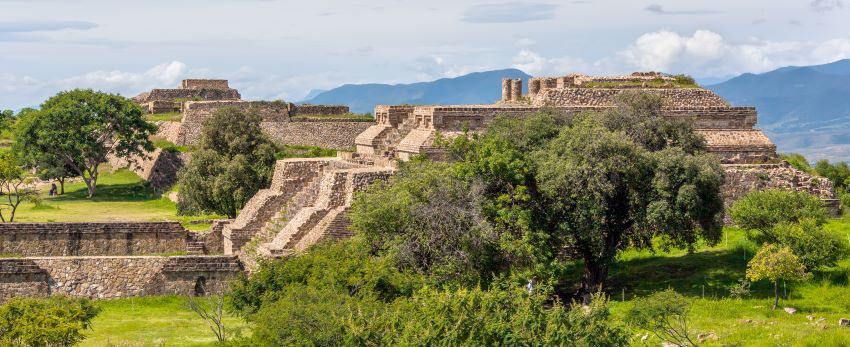Today’s Google Doodle honors distinguished Mexican archaeologist and professor Alfonso Caso Andrade, born on this date in 1896.
Caso died at 74 in 1970, leaving behind an invaluable legacy for the understanding of Mexico’s ancient cultures. One of his most notable achievements was the first major excavation of the pre-Columbian city of Monte Albán in Oaxaca.

The “doodle” is a daily feature by which Google celebrates a person or historical event with an image and a biography. Some doodles are region- or country-specific. Caso’s Doodle shows him holding a book as he stands in front of a shovel, books and ancient artifacts. Behind him is a pyramid and the word “Google” emblazoned on stones, with one of the O’s represented by the cover of Caso’s book.
Caso is one of Mexico’s “Seven Sages,” a group of early 20th-century intellectuals who shared an intense enthusiasm for literature and law. Together they founded the Society of Conferences and Concerts in 1916, aiming to propagate culture among university students in Mexico City.
Other members of the group include Alberto Vásquez del Mercado who went on to become a Supreme Court justice, Manuel Gómez Morín, a founding member of the National Action Party (PAN), and Vicente Lombardo Toledano, founder of the Workers’ University of Mexico.
As a young man, Caso frequently visited pre-Columbian archaeological sites. Although he already had a law degree and had begun teaching university courses, he decided to go back to school and focus on archaeology as a career.

His rigorous methods of interpretation earned respect from his fellow faculty, and he quickly became the leading voice in archaeology at what is now the National Autonomous University of Mexico (UNAM).
As the head of the university’s archaeology department and later the director of its museum, Caso led excavations across the country, including at the ancient Zapotec site of Monte Albán.
In 1932, excavations at Monte Albán unearthed Tomb Seven, one of the richest burial sites ever found. Using the remarkable burial offerings in the tomb, Caso was able to outline a history of Monte Albán dating back to the 900s AD. Writing books about his findings and methodology, he began to focus on the Mixtecs (Ñuu Savi), an Indigenous people of southern Mexico Caso discovered Mixtec sites around the country in Yucuita, Yucuñudahui and Monte Negro. In a major step forward for the field of archaeology, Caso learned to read Mixtec codices.
Caso also served as the first director of Mexico’s National Institute of Anthropology and History (INAH), which was established in 1939, and was a member of several U.S. societies, including the National Academy of Sciences, the American Academy of Arts and Sciences and the American Philosophical Society.
For 30 years, he was the director of the National Indigenist Institute, the first Mexican public institution to address Indigenous affairs, which existed from 1948 to 2012. He also served as the rector of UNAM from 1944 to 1945 and was the founding editor of the Mexican Journal of Anthropological Studies and the Bibliographic Bulletin of American Anthropology.
In all his roles, Caso focused on protecting Mexico’s archaeological heritage and took significant steps to safeguard the traditions and history of Indigenous communities.
